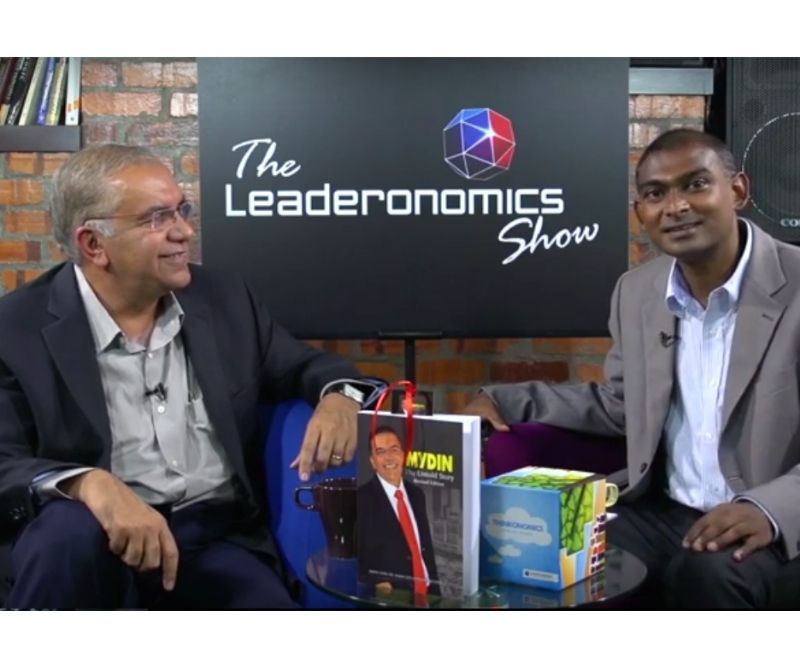2013: A Year Of Disasters For Asia

Photo credit (above): DIFD | Flickr
Above: Typhoon Haiyan, Indonesian forest fires, Rana Plaza – 2013 has not been good for Asia. Unless the growth-at-any price economic model is challenged we can expect more of the same.
Now is typically the season for looking back on the year’s events and reflecting on what they have taught us. A good starting point is an image, posted online in May, which provides a valuable lesson.*
It drew a circle centered on Hong Kong with a radius of roughly 2,500 miles (or about a four or five hour flight). Within this circle is the majority of the world’s population.
2013 was not a good year for the people inside this circle. They suffered through the Indonesian forest fires in June and July, the result of slash-and burn logging that destroyed vast swathes of Indonesia’s tropical rainforest.
These blanketed southeast Asia in the worst haze it experienced in 16 years and reduced visibility in ultra-modern Singapore to under 100 metres. More recently, Typhoon Haiyan, the strongest storm ever to make landfall in recorded history, destroyed entire villages and towns and killed over 5,000 people in the Philippines alone, making it the deadliest typhoon in that nation’s history.
Both of these events look like acts of nature – tragic but unpreventable. And yet they are part of a larger string of events that are in one way or another, the result of actions and decisions made by man. Take the forest fires in Indonesia. Forest fires are nothing new, but the fires that have contributed to Indonesia losing 20% of its forest cover over the past two decades have little in common with the blazes in California and Australia that so often make the headlines.
These fires are the product of clearance methods used by palm oil and logging companies to keep costs low and output high. Many commentators have pointed this out yet almost none have gone one step further to identify the root cause of the problem – our relentless desire globally for ever increasing quantities of cheap goods.
Palm oil – which is used to produce everything from biscuits to cooking oil to shampoo to bio-fuel and is a key ingredient in the fast food explosion – is the product that much of the forests have been cleared to produce. This, combined with the massive international demand for hardwoods, sealed the fate of the forests.
The necessity of keeping costs low requires that most important steps involved in producing goods are simply not included in their final cost. With palm oil, that includes the rapid depletion in soil quality where oil palms are planted, the acres of forest cleared to make room for them and the resulting loss in bio-diversity, and the effluent generated by processing plants which has polluted far too many rivers. Were any of these costs reflected in the final price, palm oil would be many times more expensive than it is and so would our groceries – but far fewer forests would be lost.
Raj Patel’s famous example is of the $200 hamburger (£122), 1which takes into account the fifty-five square feet of cleared rainforest and 2,393 liters of water it can take to produce. A $200 hamburger may not sound great, but the result of under-pricing resources is that we consume vastly more than is or even good for us.
It is impossible, of course, to say with any certainty that climate change was the direct cause of any particular storm. But the fact remains that Typhoon Haiyan came the same year that CO2 levels reached 400ppm, their highest point in at least two and a half million years and possibly far longer.
A closer look reveals that the very same under-pricing and consumption habits that create incentives to clear forests and grow ever more palm oil have also warmed the planet’s oceans, which, as scientists have long known, intensifies the severity of phenomenon such as typhoons. This conclusion has unfortunately been borne out time and again in countries such as the Philippines, which was hit by nearly twice as many storms this decade as it was only twenty years ago.
Another event that made headlines this year was the tragic collapse of Rana Plaza in Bangladesh, which killed more than 1,000 people. This too is part of the same economic logic of keeping production costs low to promote consumption. Resources are not the only thing that can be underpriced; labor is as well.
The 5,000 people who worked in the building were there because their work was cheap. The textile industry is notorious for its willingness to ignore any concerns about safety, health and labor rights in search of the lowest prices but this kind of predatory behavior is a product of consumers worldwide demanding ever cheaper clothes.
Even cotton, the industry’s material of choice, is often called the “world’s dirtiest crop” because of the sheer volume of insecticides used in its cultivation. Despite covering only 2.5% of the world’s cultivated land, cotton used a staggering 16% of its insecticides. Not only do these chemicals damage the environment; they harm the health of the often untrained and unprotected farmers who use them. None of this is paid for by the consumers of the endless supply of cheap clothing.
The model of growth through relentless consumption, which thrives on under-pricing and which has caused much of this damage, has become part of the accepted orthodoxy amongst politicians, business leaders and economists. In part, it’s because of an unwillingness to confront hard truths but also because of the influence of vested interests who shape the rules to suit themselves. The more dramatic consequences of this sad reality have been all too apparent this year, but there are other equally important changes happening just out of sight.
There are no easy fixes to these problems as we have been heading in the wrong direction for too long for that to be the case. But Asian governments must step up and recognise that a growth-at-any-cost model that served the world well in the 20th century is no longer applicable and that it is far past time to stop aping western lifestyles. If the people inside the circle don’t take action, it won’t much matter what the people outside it do.
*Disclaimer: This article was originally posted on 19 December 2013, in The Guardian.
Chandran Nair is the Founder & CEO of the Global Institute For Tomorrow, a pan-Asian think tank, the author of ‘Consumptionomics: Asia’s Role in Reshaping Capitalism and Saving the Planet’ and the Creator of ‘The Other Hundred’.
Leadership
Tags: Worldview





